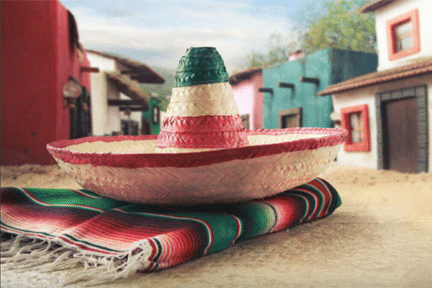What is Mexican serape and how is it produced?
News Category: News and General Discussion
-
Throughout history, great revolutionaries such as Emiliano Zapata and Venustiano Carranza and great painters such as Diego Rivera used the famous Mexican serape
Published January 9, 2023
The Mexican serape arrived in national territory after the conquest and became a great Mexican tradition.
During the colony, the cotton blanket (Tilmatli) used by the natives was combined with the sheep’s wool brought by the Hispanics, in addition they also fused pre-Hispanic and Spanish designs.
What is Mexican serape?
At first they were handmade, and it is a rectangular-shaped wool blanket with a set of cotton threads (warp).It was mainly made to cover from the cold or rain, however, later it was used as a carpet or rug.
How does the serape come about?
The serape was born in the region of Chiautempan and Contla in Tlaxcala, from there it spread to other states of the Republic.When he arrived in Saltillo, capital of Coahuila in 1591, he took on a special importance, since he began to weave on a pedestal loom, with a thin thread of wool of multiple colors.
This allowed to achieve more delicate figures, and as a main feature carries the image of a diamond in the center of eight peaks and the borders that carry inside “the flower of the little hand”, a medicinal plant of the desert.
They can also carry the diamond and also appear the shadows that are the sunrises and sunsets of the desert.
His varied designs stand out from others, thereby achieving the most recognized in our country and in the world as “Sarape de Saltillo”.
The serape in Mexico
Throughout our history, it was used by artisans, peasants and revolutionaries such as Venustiano Carranza and Emiliano Zapata.Also great painters such as Diego Rivera, who used it as inspiration for his work “The Zapatista landscape of 1915”.
The great landowners, Creoles or well-to-do mestizos wore their Sarapes of Saltillo or San Miguel de Allende, when they proudly wore the charro costume.
Over time, other types of serape were derived such as the jorongo or cotón, the gabán and currently the cotorina or the poncho.
The best known serapes are those of Chiauhtempan, those of Teocaltiche and those of Saltillo, each with its style of weaving, color and designs.
The states of Tlaxcala, Aguascalientes, Hidalgo, Jalisco, San Luis Potosí, San Miguel de Allende and the State of Mexico also stand out in production.
Did you know…?
In Saltillo, there is the Museum of Sarape and Mexican Costumes, it is a building of the eighteenth century, acquired by the Government of Saltillo in 2007.At the inauguration was the chronicler of Saltillo, Armando Fuentes Aguirre “Caton”, the Secretary of Education and Culture, who pointed out that the Sarape of Saltillo is mystery and prodigy, “because our ancestors took all the sun and all the rainbows of the world and made them stay still in the folds of the serape”.
-


Leave a Reply